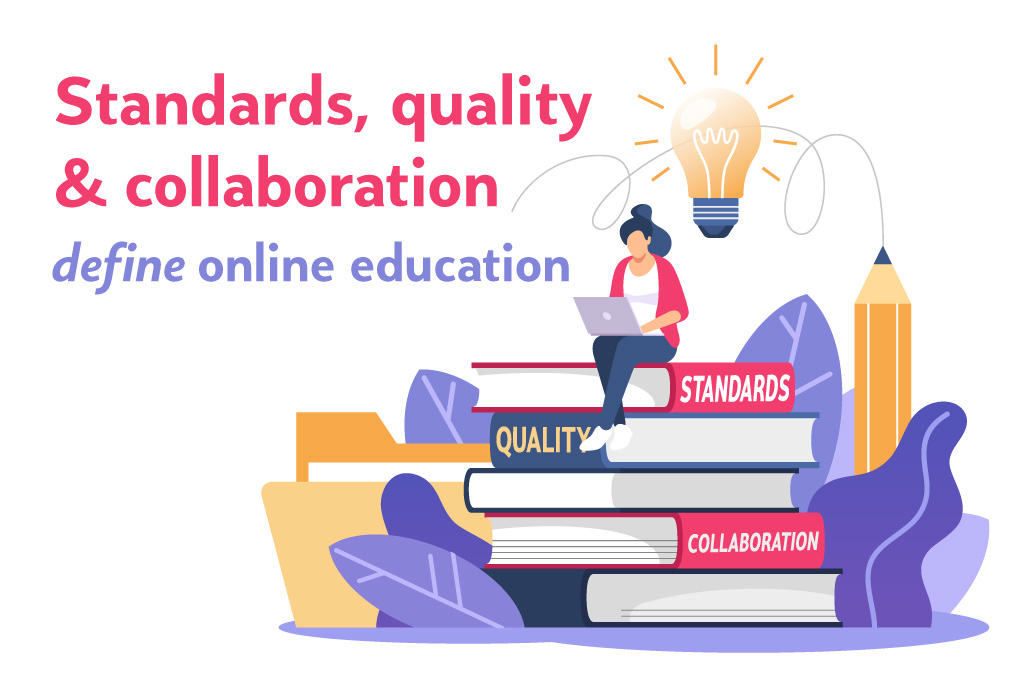
The Covid pandemic spring boarded online learning from an education option to a emergent necessity for school administrators, students, teachers and parents. Most teachers had not been trained or provided the tools to move their curriculum and instruction entirely online in such a brief period. As a result, many classrooms were moved to Zoom-like classrooms, resulting in educators and students spending hours online together and limiting change to the methods and practices of delivering education.
Despite their efforts, educators learned firsthand that teaching remotely required different strategies to instruct, communicate and engage their students. The struggles experienced by some teachers, students and parents with emergency remote learning have created a negative association with online learning.
It is important to understand that learning experienced during the pandemic was not quality online learning. Instead, it was the result of an historic, unplanned emergency that left many schools and educators scrambling to deliver K-12 education.
QUALITY ONLINE LEARNING ISN’T EMERGENCY REMOTE LEARNING, BUT CAREFULLY CRAFTED LEARNING OPPORTUNITIES
VHS Learning President & CEO Carol DeFuria emphasizes the key differences between an emergency remote learning model and online learning model. “Emergency remote learning typically uses a ‘lecture model’ that attempts to duplicate a teacher’s face-to-face classroom. In contrast, high-quality online learning by design puts students at the center of the learning process,” said DeFuria.
In a quality online learning environment, students work on assignments, group projects and contribute to class discussions at any time. The online course is developed by subject matter experts and instructional designers. The National Standards for Quality Online Courses provides a framework for designing effective online courses.
QUALITY ONLINE LEARNING ISN’T DEVOID OF TEACHERS
A misconception of online learning is that the student is learning without the support of a teacher. Quality online learning opportunities are taught by accredited instructors who received training to teach in an online environment and continue their education to adapt best practices.
When educators are trained to teach online, they engage their students and provide ongoing support and guidance on the subject matter. Students ask questions, share ideas, and take an active role with their online teachers.
QUALITY ONLINE LEARNING ISN’T ISOLATING BUT COLLABORATIVE
Online learning often comes with the misconception that there is little to no communication between classmates and all work is done independently. While independence is one aspect to being successful, collaborative learning is central to online courses.
The Columbia Center for Teaching and Learning highlights the importance of working with peers, affirming that “Collaborative learning is active learning involving several students working together and sharing the workload equitably as they progress toward intended learning outcomes.”
Research from the Columbia Center for Teaching and Learning shows a positive correlation between collaborative learning experiences and students’ achievement of learning outcomes. In an online course with trained teachers, group work is common where students learn, discuss and challenge each other with projects and assignments. Online learning isn’t just independent study; it is sharing ideas with classmates to engage students in their own education.
Quality online learning also is based on a nationally recognized standard of quality where school leaders plan for the development of high-quality online courses, instructional practices, and school or districtwide programs. Educators uphold individual standards where they can continuously improve online learning programs. Online learning isn’t rushed or created by emergencies. Rather, it is built by collaborative education leaders who continue to work at revising and improving programs to provide students the highest quality of education.
Supported by this information, educators, parents and students understand that online learning involves planned curriculums, quality education and collaboration. Curriculums are guided by national standards and built by educators who have the background and knowledge to deliver an excellent educational experience.

